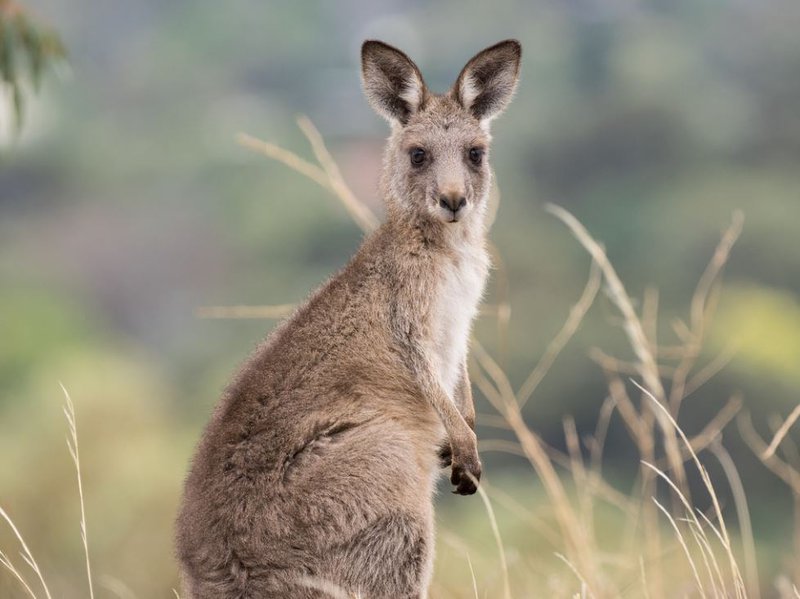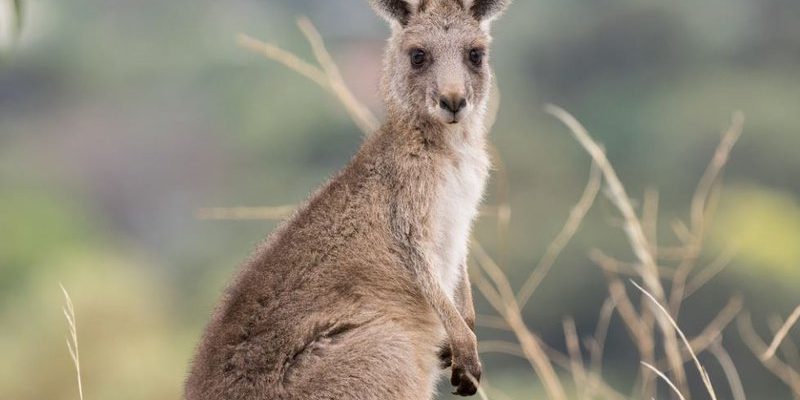
You might think that kangaroos are just big, hopping creatures, but there’s so much more to them! Their social structures, habits, and even their diets can surprise you. Plus, understanding the truth about them can help promote better conservation efforts and appreciation for these unique animals. So, let’s dive into some of the common myths about the Eastern Grey Kangaroo and clear up any confusion.
Myth 1: All Kangaroos Are The Same
This is a common misconception that can lead to some serious misunderstandings. While it’s true that all kangaroos belong to the same family, Macropodidae, there are several species with unique traits and behaviors. For example, the Eastern Grey Kangaroo is different from the Red Kangaroo in size and habitat preferences.
Eastern Grey Kangaroos are generally smaller and prefer more forested or hilly areas, while Red Kangaroos thrive in the open, arid regions of Australia. So, lumping all kangaroos together is like saying all cats are the same just because they’re felines. Each has its quirks and habitats that make it special.
You might be surprised to learn that there are also smaller cousins, like wallabies and tree kangaroos. These variations showcase the diversity within the kangaroo family. So, next time you think of kangaroos, remember that each species tells its own story.
Myth 2: Kangaroos Are Aggressive Creatures
If you’ve ever seen kangaroos in action, you might wonder if they’re as dangerous as they look. The truth is, Eastern Grey Kangaroos are not inherently aggressive. Like many wild animals, they can become defensive, especially when protecting their young or territory.
Imagine if you were taking a walk and someone invaded your personal space. You might respond defensively too! These kangaroos are usually quite laid-back and prefer to graze peacefully on grass and leaves.
That said, they can kick with incredible force if they feel threatened. It’s more about self-defense than aggression. So, while they can be intimidating, it’s essential to respect their space and understand their behavior. They’re more likely to hop away than confront you!
Myth 3: Kangaroos Are Always Found in the Wild
You might think that kangaroos only live in remote areas, but that’s not the whole story. Eastern Grey Kangaroos are surprisingly adaptable and can often be found in suburban areas or even cities. As human expansion continues, these animals have learned to coexist with people.
If you’ve ever visited places like Canberra or Sydney, you might have spotted kangaroos grazing in parks or golf courses. They’ve become quite the urban wildlife. It’s fascinating to see how they adjust their behavior to fit in with urban life.
This adaptability is crucial for their survival, especially with changing environments. So, don’t be shocked if you see a kangaroo munching on grass near your local café! They’re just making the best out of their surroundings.
Myth 4: Kangaroos Can’t Swim
You might be surprised to know that Eastern Grey Kangaroos are actually pretty good swimmers! This myth probably comes from their strong legs, which make them look more suited to hopping on land. However, when it comes to survival, they can easily take a dip in the water if needed.
Kangaroos have a unique way of swimming. They use their front legs to paddle while their tails help balance them. This skill comes in handy when escaping predators or crossing rivers. So, if you ever see one splashing about, don’t be alarmed—they’re just showcasing their swimming prowess!
This ability also highlights their adaptability and survival instincts. They’re not just land animals; they can thrive in various environments.
Myth 5: Kangaroos Only Eat Grass
Another common misconception is that kangaroos’ diets are strictly vegetarian, consisting solely of grass. While it’s true that they munch on grasses, they actually enjoy a range of vegetation. Eastern Grey Kangaroos also eat leaves, shoots, and even some types of fruits when available.
Their digestive systems are specially designed to help them break down tough plant materials. They have a unique chamber in their stomach to ferment food, allowing them to extract as many nutrients as possible. This process is somewhat similar to what cows do, making them efficient at converting their food into energy.
So, the next time you see a kangaroo, remember that it’s not just a grass lover. It’s a gourmet eater, sampling a diverse menu of plant life!
Myth 6: Kangaroos Are a Threat to Livestock
Many farmers worry that kangaroos pose a significant threat to their livestock or crops. While Eastern Grey Kangaroos can occasionally nibble on pastures, the reality is a bit more nuanced. They typically feed on grass and plants that are less desirable to domestic animals.
In fact, these kangaroos can also contribute positively to the ecosystem. By grazing, they help maintain the health of grasslands, promoting new growth.
You might be wondering how to approach the balance between kangaroo populations and farming. Many farmers use fencing or other methods to protect their crops without harming these native creatures. It’s all about finding ways to coexist and appreciate the role of kangaroos in the Australian landscape.
Myth 7: Kangaroos Are Just a Tourist Attraction
Lastly, many people see kangaroos as mere symbols for tourism, thinking they are just here for us to take cute selfies with. While they are certainly iconic and beloved tourist attractions, Eastern Grey Kangaroos are much more than that! They play an essential role in Australia’s ecosystem.
As a keystone species, they help shape the landscape and maintain the health of their habitats. Additionally, their social structures and behaviors offer valuable insights into wildlife conservation.
So, instead of viewing them solely as photo ops, it’s worth appreciating their ecological importance. Understanding their role can lead to better conservation efforts and attitudes towards wildlife in general.
Clearing up these myths and misconceptions about the Eastern Grey Kangaroo is like peeling away layers to reveal a deeper truth. These creatures are not just symbols of Australia; they’re fascinating, adaptable, and essential parts of the ecosystem. Whether they’re hopping through the hills or quietly grazing in urban parks, they remind us of the diverse wildlife we share our world with.
So, the next time you see a kangaroo, remember that there’s a lot more to them than meets the eye. They have their quirks, lives, and roles that contribute to our environment. Let’s embrace the truth about these incredible animals and work towards protecting their habitats for generations to come.

